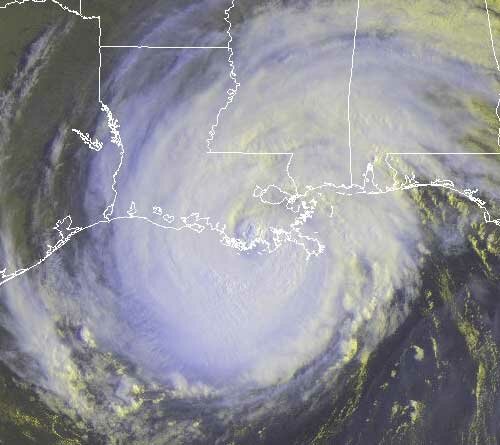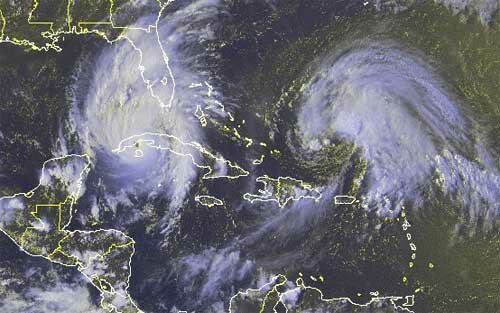With Hanna Out of the Way, All Eyes Turn to Ike
Sunday, September 7th, 2008Topical Storm Hanna ended up not causing as much damage as it could have, making landfall Saturday morning near the North Carolina/South Carolina border with winds bringing it close to but not quite hurricane strength. Over the course of Saturday, it moved rapidly north disrupting, among other things, the NASCAR night race at Richmond, Virginia and the US Tennis Open in New York. The storm has become extratopical, and is now heading east towards the United Kingdom.
Hanna’s rainfall will help ease drought conditions in North and South Carolina. Here are some rainfall totals from the storm:
Cape Fear, NC – 3.02 inches
Lumberton, NC – 5.0 inches
Whiteville, NC – 4.47 inches
Wilmington, NC – 2.33 inches
Darlington, SC – 3.1 inches
Myrtle Beach SC – 4.41 inches
Newark, DE – 3.69 inches
Atlantic City, NJ – 2.89 inches
East Brunswick, NJ – 5 inches
Ridgewood, NJ – 4.72 inches
Allentown, PA – 3.06 inches
Philadelphia, PA – 2.27 inches
Manhattan, NY – 3.54 inches
White Plains, NY – 4.42 inches
East Hartford, CT – 6.19 inches
New Canaan, CT – 6.45 inches
Warwick, RI – 4.07 inches
Boston, MA – 2.2 inches
Needham, MA 6.1 inches
North Grafton, MA – 6.41 inches
Nashua, NH – 6.56 inches
Kennebunkport, ME – 5.8 inches
Portland, ME – 5.52 inches
With Hanna (and Gustav) out of the way, the big concern now is Ike, which appears to be the last of this wave of storms that started back on August 15th with Fay. (Josephine faded away from shear a few days ago). Ike is a category 4 hurricane that pretty much demolished Grand Turk Island last night, and at 5 PM was 75 miles northeast of Guantanamo Bay, headed towards landfall on Cuba. The storm is moving west at 14 MPH with 120 MPH winds extending 60 miles from the storm’s center.
The major factor guiding Ike’s path is an upper level high pressure system over the North Atlantic ocean. Ike is underneath this system and is being prevented from moving north. After it crosses Cuba and emerges into the Gulf, Ike is expected to strengthen, and his path will be determined by what happens with the high. If it weakens, Ike may move towards the Florida panhandle. If it maintains its position, we could be seeing landfall somewhere in Louisiana. And, if it were to intensify westward, landfall might be in Texas. Whatever happens, landfall isn’t going to be until late next week or next weekend.
In the meantime, it looks like the Atlanta area may have its first real rain since Fay departed. We are also being affected by the ridge that’s controlling Ike, but it’s possible that a cold front or two may make it this far south midweek. The HPC is predicting up to an inch of rain by Friday. Then depending on where Ike makes landfall, he is expected to move northeast, and may affect our weather by the weekend, although it’s still too early to tell how much.
Sphere: Related Content


